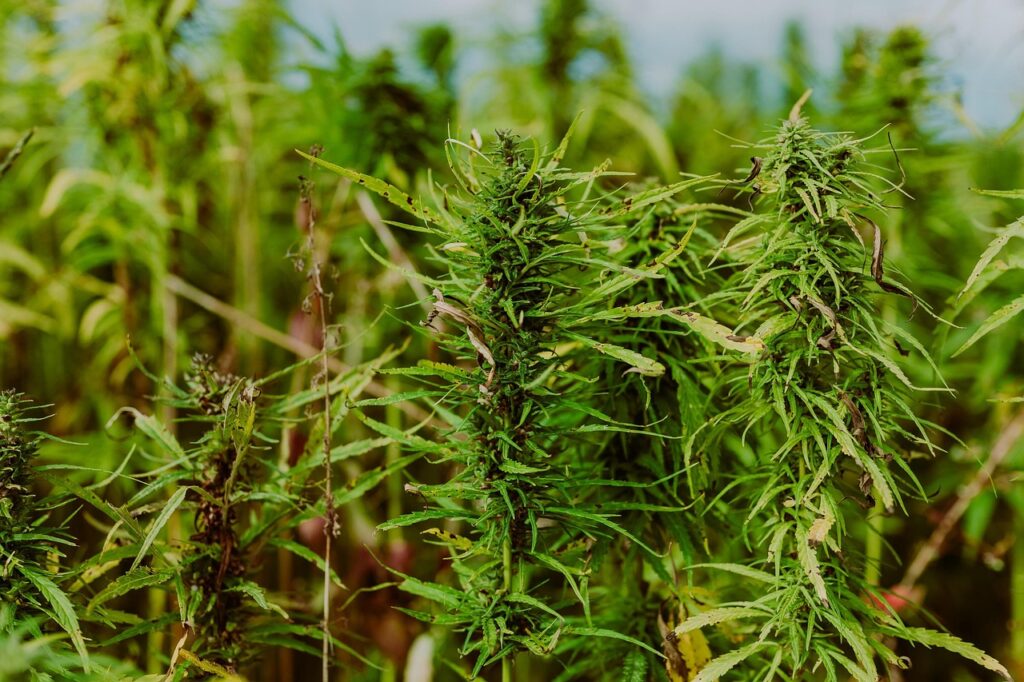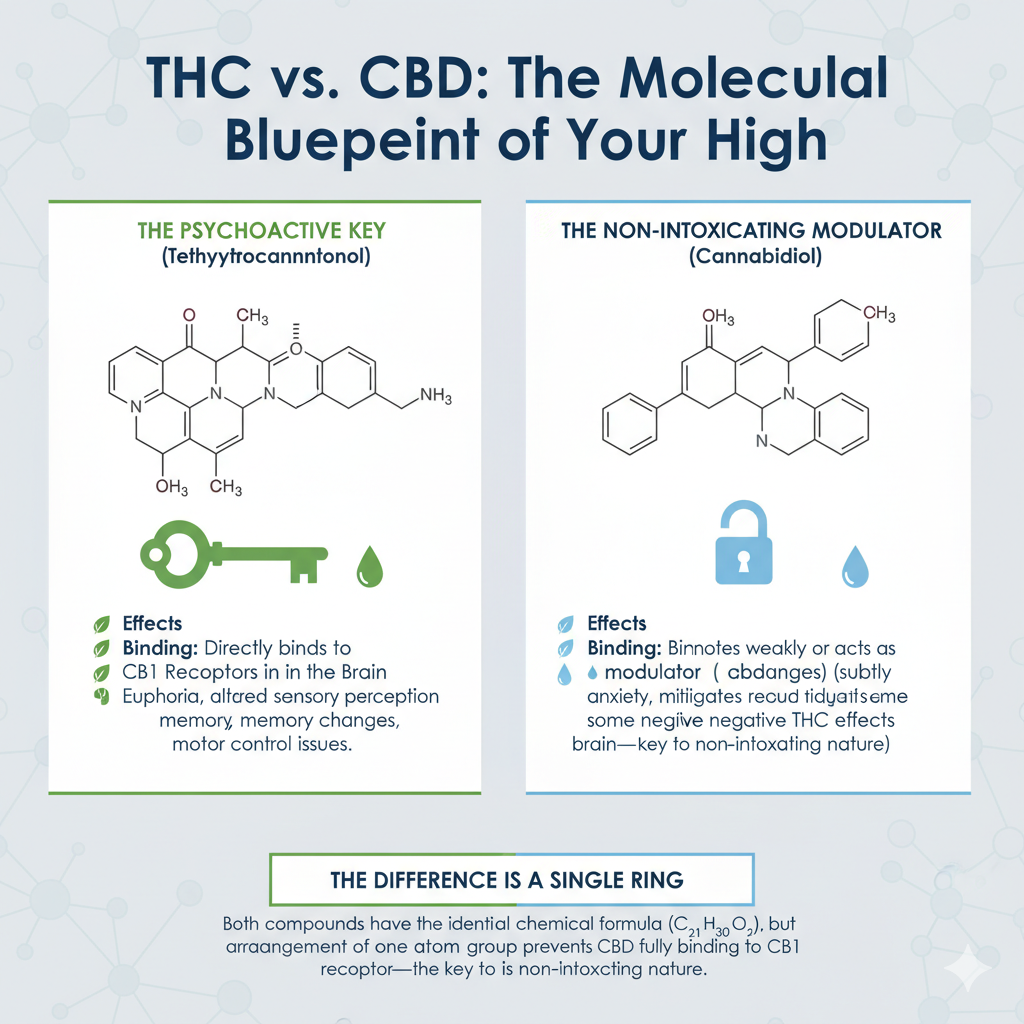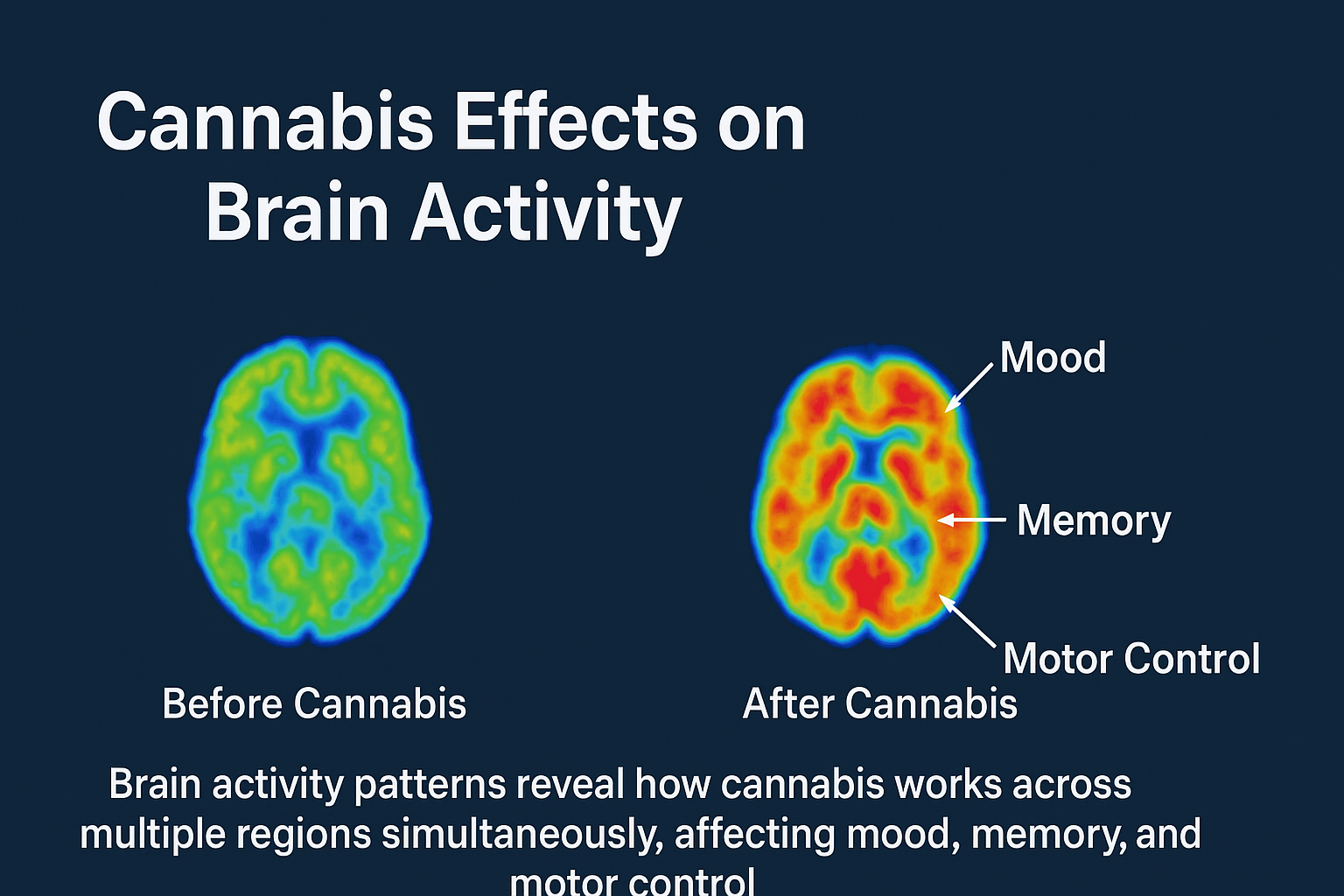What Happens to Your Body When You Smoke Weed?
You take a deep pull from a joint, and a familiar calm begins to wash over you. But have you ever wondered what’s actually happening inside your body the moment that smoke hits your lungs? The journey from that first puff to the feeling of being high is a complex chemical cascade that has captivated humanity for millennia. Let’s demystify the process and explore the precise science of how cannabis works.
When you smoke weed, THC quickly enters your bloodstream through the lungs, binds to brain receptors, and alters perception, coordination, and mood. This isn’t magic—it’s biochemistry. Understanding the marijuana chemical composition reveals why millions of people worldwide are drawn to this ancient plant, and why scientists continue studying its effects with such intensity.

The Marijuana Chemical Composition — More Than Just THC and CBD
Understanding how cannabis works begins with examining what’s actually inside those green, mossy buds. The cannabis plant, native to Central and South Asia, has evolved into a global phenomenon with experts estimating over 700 different strains currently on the market. Each strain carries its own unique profile of active compounds.
Think of cannabis compounds like different instruments in the same orchestra. You’ve likely heard of the two star players: cannabidiol (CBD) and tetrahydrocannabinol (THC). But these are just the headliners. Cannabis contains hundreds of cannabinoids, along with terpenes (which give each strain its distinctive smell) and flavonoids (which contribute to the plant’s color and potential health benefits).

This intricate marijuana chemical composition explains why buying from a legal dispensary differs vastly from purchasing on the street. When marijuana remains criminalized, verifying exactly what you’re consuming becomes nearly impossible. That mystery bag could contain wildly different ratios of compounds than you expect.
CBD vs THC Effects — A Tale of Two Cannabinoids
The CBD vs THC effects represent one of the most fascinating contrasts in pharmacology. While both are cannabinoids, they produce dramatically different experiences in your body.
THC (Tetrahydrocannabinol):
- Highly psychoactive—this is what gets you “high”
- Creates euphoria, altered perception, and heightened sensory experiences
- Can increase anxiety and paranoia in some users
- Triggers the “munchies” by stimulating appetite
- Slows reaction time and motor functions
CBD (Cannabidiol):
- Psychoactive but not intoxicating—won’t make you feel high
- Produces calming, mellow sensations
- May reduce anxiety and inflammation
- Currently being researched for treating psychosis, sleep disorders, and muscle spasticity
- Can potentially counteract some negative THC effects
Over the last decade, CBD has been championed as a potential medical breakthrough. You’ve probably seen ads for CBD oil products claiming to solve countless ailments. While research is ongoing, results vary significantly. For cancer treatment, there’s currently no evidence supporting CBD’s effectiveness, despite internet claims.
Understanding THC and CBD effects is crucial because these two compounds largely determine how cannabis works in your body. Most strains contain significantly more THC than CBD, as cannabis farms compete to grow stronger, more potent varieties. This imbalance means the psychoactive, high-inducing effects often overpower CBD’s calming properties.
The Highway to Your Brain — How THC Affects the Brain Directly
Let’s follow THC’s journey through your body. You’re our test subject now—taking a deep breath of that joint and letting smoke fill your lungs.
Smoking remains one of the quickest ways to get high. Here’s why: The smoke contains high levels of THC that immediately fill your lungs. You might experience irritation and cough—this happens with any smoke inhalation, not just marijuana. Your lungs contain roughly 480 million tiny air pockets called alveoli, creating about 1,500 miles of airways. That’s equivalent to driving from Nairobi to Cairo, or from Lagos to Khartoum, or roughly 2,414 kilometers for metric readers.
These alveoli rapidly transfer THC from smoke into your bloodstream. Within seconds, you start feeling psychoactive effects. The THC races through your circulatory system straight to your brain, where it binds to the brain’s CB1 receptors, part of the endocannabinoid system.
The endocannabinoid system is your body’s natural regulatory network, controlling mood, memory, appetite, and pain sensation. THC hijacks this system, flooding it with external cannabinoids. This explains how THC affects the brain so powerfully—it’s mimicking and amplifying signals your body already produces naturally.
This connection between marijuana chemical composition and brain chemistry reveals why cannabis produces such varied effects. Your brain’s receptor density, natural endocannabinoid levels, and genetic factors all influence your experience.
A Brief Marijuana History — From Ancient Rituals to Modern Prohibition
To understand how cannabis works in modern society, we need to explore marijuana history. The first recorded use dates back to 2800 BC in China, where Emperor Shen Nong—considered by many as the grandfather of medicine—documented cannabis’s medicinal properties.
From that point, cannabis knowledge spread throughout India, Syria, Greece, and Rome. Various cultures ascribed healing properties to the plant: inflammation relief, depression treatment, arthritis pain management, and even asthma remedies. While early medicine was notoriously unreliable (we’re looking at you, leeches and milk transfusions), something about this plant consistently captured doctors’ attention across centuries.
In Hinduism, the god Shiva earned the title “Lord of Bhang” because cannabis was his favorite food. For centuries, Hindus believed fevers were Shiva’s hot breath of anger upon you. Rituals involved consuming cannabis to regain the god’s favor and break the fever. Modern medical science now confirms that THC acts in the hypothalamus to reduce body temperature, counteracting fevers. Ancient intuition met biochemical reality.

Marijuana history took a dark turn in the West. Medical marijuana arrived in 1841 through Irish physician William Brooke O’Shaughnessy, who studied Indian medicines. But America’s complicated relationship with cannabis began even earlier—in 1605, when the Jamestown Colony grew hemp (a cannabis family plant) as a cash crop. George Washington himself famously cultivated it at Mount Vernon for rope and fabric manufacturing.
By 1880, roughly 500 “hashish parlors” operated in New York City alone, frequented by upper-class patrons. Then the crackdown began. As the government tightened drug regulations to combat opium addiction and pharmaceutical fraud, cannabis got lumped in with highly addictive, dangerous substances. In 1971, President Nixon declared his “War on Drugs,” calling drug abuse “Public Enemy Number One.” The USA now spends roughly $51 billion annually on this campaign—enough to give each Canadian citizen $1,416.67 yearly as a “thanks for being lovely neighbors” gift.
This prohibition era created much of the misinformation we still battle today. Understanding this marijuana history context helps separate fear-mongering from scientific fact.
Your Brain on Cannabis — The Immediate Effects and Sensations
Let’s crack open your skull—metaphorically, of course—and examine what’s happening inside. Understanding how cannabis works requires looking at specific brain regions affected by THC and CBD effects.
The Amygdala handles anxiety, emotional responses, and fear. CBD dulls activity here, but THC can stimulate it. This explains why many users feel calmer after smoking, while others experience heightened paranoia and worry—especially as CBD’s effects wear off and THC dominates.
The Basal Ganglia controls motor planning. THC slows these functions, making movements feel deliberate and sluggish.
The Neocortex processes sensory information. When THC floods this region, colors appear brighter, sounds become louder, music feels more layered and rich.
The Cerebellum manages motor control and coordination. Impairment here explains why your reflexes delay, information processing slows, and speech becomes drawn out.
The Hypothalamus regulates appetite and body temperature. THC stimulation here creates the famous “munchies”—suddenly you’re raiding your friend’s snack pantry like it’s a survival mission.
Driving under marijuana’s influence becomes extremely dangerous due to these impairments. How THC affects the brain creates measurable reaction delays. One UK study found fatal accidents are 1.65 times more likely when drivers are under marijuana’s influence, while Canadian research suggested accidents could be two to four times as likely. Most countries enforce zero-tolerance policies, complicated by the fact that THC can show up in blood tests for over 48 hours, saliva for 72 hours, urine for 3-30 days, and hair follicles for 90 days.
But it’s reductive to think cannabis only dulls your brain. THC actively stimulates neural activity. Many users report heightened imagination, thinking outside the box, and generating fresh ideas. Artists throughout history have used recreational substances to broaden creative horizons. Dulling negative sensations like pain and anxiety, coupled with THC stimulation, produces feelings of euphoria.
Beyond the Hype — Debunking Common Myths About Cannabis
Much fear-mongering surrounds cannabis. Let’s examine common myths about the risks of smoking weed using current research.
Myth 1: “Marijuana rots your brain”
False. Rotting is the decay of dead organic material as bacteria and fungi consume it. This simply doesn’t happen in living brain tissue. However, this doesn’t mean cannabis is risk-free.
Myth 2: “It causes psychosis”
Complicated. Psychosis means losing contact with reality—experiencing hallucinations (perceiving things that aren’t there) or delusions (paranoid beliefs without basis). Does marijuana cause psychosis?
Research shows links between heavy pot smoking and psychosis onset, particularly in teenagers and young people. Cases exist where people with schizophrenia or bipolar disorder experienced symptom onset linked to heavy marijuana use. However, what hasn’t been proven is causation. Most scientists believe weed can accelerate underlying psychotic conditions rather than create them.
THC and CBD effects on brain chemistry are powerful. If someone has a genetic predisposition to psychotic disorders (schizophrenia affects 1 in 300 people; bipolar disorder affects 1 in 100), THC consumption can trigger episodes. For the general population, risks of smoking weed regarding psychosis remain very low—but they’re not zero.
Myth 3: “It’s a gateway drug”
Partially true, but misleading. The chemical buzz cannabis creates can prime some brains to crave more intense highs. Studies show this happens in a minority of cases. However, cigarettes and alcohol demonstrate similar gateway patterns. Why isn’t this same scrutiny applied to legal substances? you can learn more on our blog on alcohol and health and the myths sorrounding it.
Research reveals a more powerful gateway than any drug: trauma. Difficult childhoods, abuse, and acute suffering are far more likely to result in hard substance dependence. Weed is often part of that journey, but it’s a symptom more than the cause.
Myth 4: “It’s highly addictive”
Dependence ≠ addiction. Imagine drinking coffee daily. Your brain adjusts its chemistry expecting that caffeine boost. Miss a day, and you get headaches, irritability, fatigue. That’s dependence.
The same happens with regular weed use. Smoke daily at 4:20, and your brain anticipates it at 4:19. Coming off feels hard—cravings, irritation, sleep struggles, appetite loss—for about two weeks. Then you’re likely back to normal. Up to 30% of weed smokers experience some dependence, but it’s fairly easily broken.
However, there’s a small risk of long-term addiction, especially for people under 18. Developing brains can build themselves around expecting daily chemical hits, creating deeply rooted patterns that may result in lifelong addiction. This represents one of the genuine risks of smoking weed that shouldn’t be dismissed.
The Cardiovascular Question
Some studies have suggested a potential link between heavy cannabis use and cardiovascular events. While research continues evolving, users with heart conditions should approach cannabis cautiously. This represents another area where understanding how cannabis works systemically—not just in the brain—matters for safety.

Different Consumption Methods Change Everything
How cannabis works varies dramatically based on consumption method. Smoking or vaping delivers THC to your bloodstream rapidly, producing highs lasting around three hours. Many users prefer edibles—gummies, brownies, cookies—which take significantly longer to kick in but produce highs lasting hours, even up to a day. The digestive system slowly releases chemicals into your bloodstream, creating a fundamentally different experience.
This complexity makes studying marijuana effects challenging. Research must account for which strain is used, how subjects ingest it, individual brain chemistry, age, and tolerance levels. The human brain contains approximately 86 billion neurons. A grain-of-sand-sized brain sample would contain 100,000 neurons and 1 billion synapses. Quantifying exactly what’s happening in this incredibly complex organ remains a medical science challenge.
One person might take one puff and spend the day feeling anxious. Their elderly grandmother might smoke a whole bowl and feel nothing but zen. Individual variation is enormous, making blanket statements about THC and CBD effects difficult to generalize.
The Mind-Body Connection and Cannabis
For those interested in exploring consciousness and mental states without substances, understanding how cannabis works can actually deepen appreciation for your brain’s natural capabilities. Practices like science-backed meditation techniques can activate similar brain regions and produce calming effects through your body’s own endocannabinoid system—no external substances needed.
Similarly, awakening your consciousness through intentional practices offers insights into how powerfully your mind influences your physical and emotional state. Cannabis hijacks natural processes, but those processes exist independently and can be cultivated through mindful practice.
Final Thoughts — Understanding the Complex Truth of How Cannabis Works
How cannabis works in your body is remarkably sophisticated. From the moment smoke hits your lungs to THC binding brain receptors, from ancient rituals to modern prohibition, from genuine medical potential to real risks—cannabis embodies complexity.
If there’s one takeaway, it’s this: marijuana, much like life, resists simple answers. Anyone claiming it’s totally amazing with no downsides is lying. Anyone calling it the devil’s leaf spelling society’s doom is equally wrong. Even ice cream has downsides.
The big picture matters. Cannabis isn’t a miracle cure-all everyone should use daily, nor is it a monstrous threat requiring zero-tolerance imprisonment. Understanding how cannabis works means acknowledging both potential benefits and legitimate risks of smoking weed. Young people with developing brains face different risks than adults. People with underlying psychotic conditions need different considerations than the general population. Heavy users driving pose real dangers to themselves and others.
Humanity has been consuming this plant for over 4,800 years. Our fascination persists because the experience it creates touches something fundamental about human consciousness—our desire to alter perception, ease suffering, enhance creativity, and explore our own minds.
As research continues evolving and legalization debates unfold globally, one thing remains certain: the story of cannabis and humanity is far from over. Armed with knowledge about marijuana chemical composition, brain chemistry, and individual variation, you can make informed decisions about whether and how cannabis fits into your life.
Moderation, education, and honest assessment of personal risk factors remain your best tools for navigating this complex topic.
Frequently Asked Questions
How long does THC stay in your system?
THC detection varies by test type: blood tests detect it for 48+ hours, saliva for up to 72 hours, urine for 3-30 days depending on usage frequency, and hair follicles for up to 90 days.
Is it safe to smoke weed every day?
Daily use can lead to dependence—your brain adjusts its chemistry expecting regular THC input. While not life-threatening, this creates withdrawal discomfort when stopping. Young people under 18 face higher addiction risks as their developing brains may build themselves around expecting daily use.
Can CBD balance out the effects of THC?
CBD can potentially reduce some THC-related anxiety and paranoia by dulling amygdala activity. However, most cannabis strains contain far more THC than CBD, so this balancing effect is limited. Pure CBD products without THC won’t produce a high at all.
